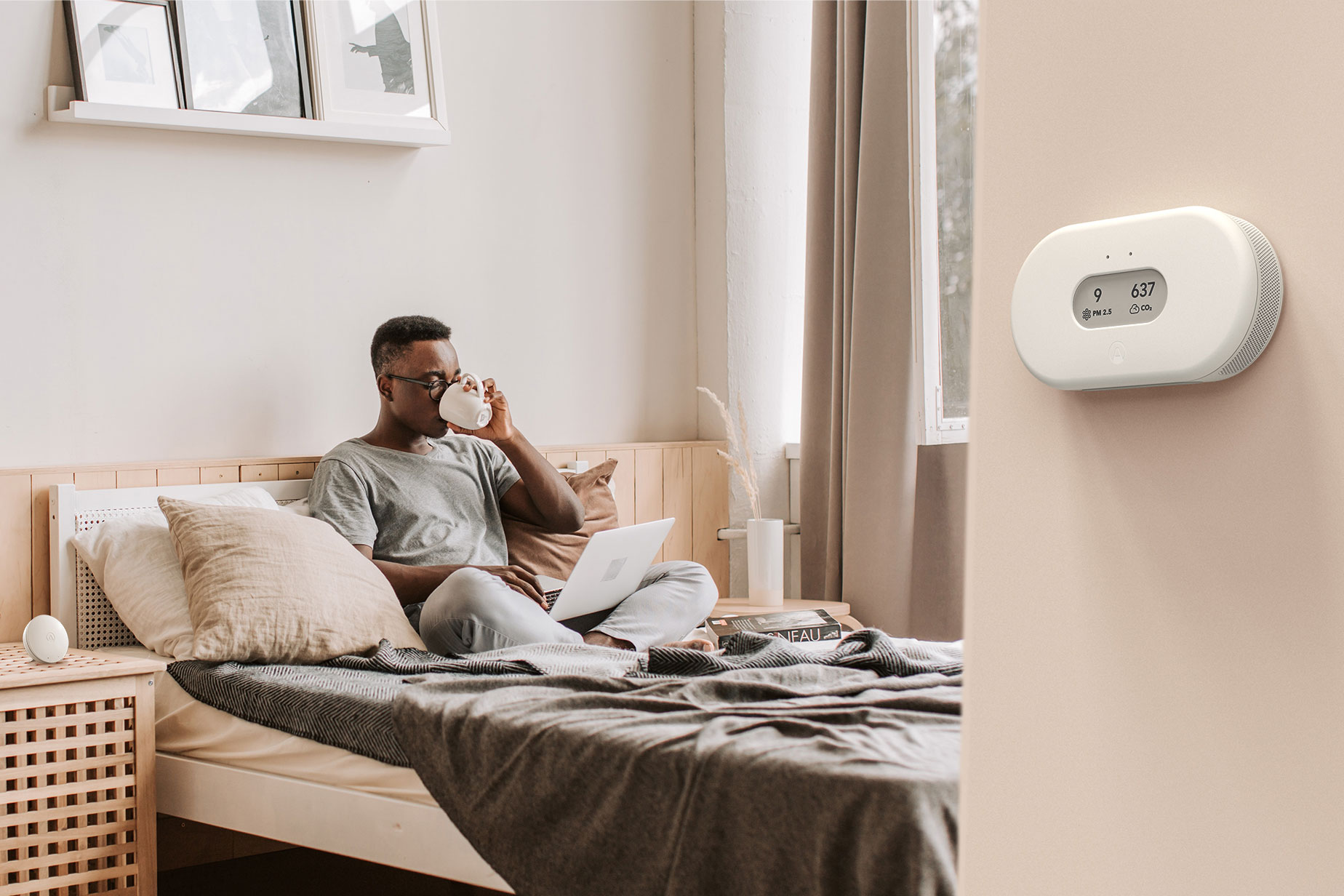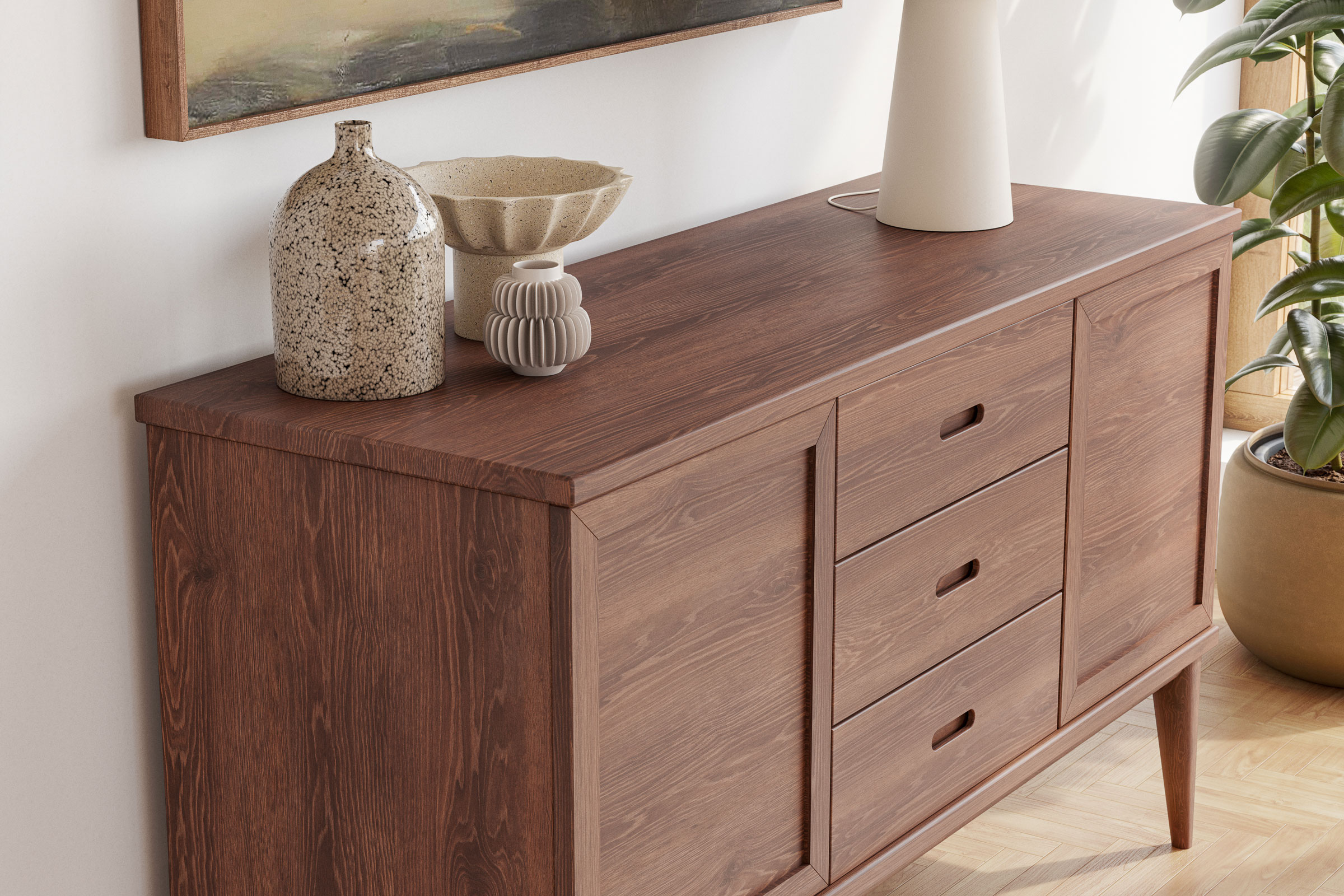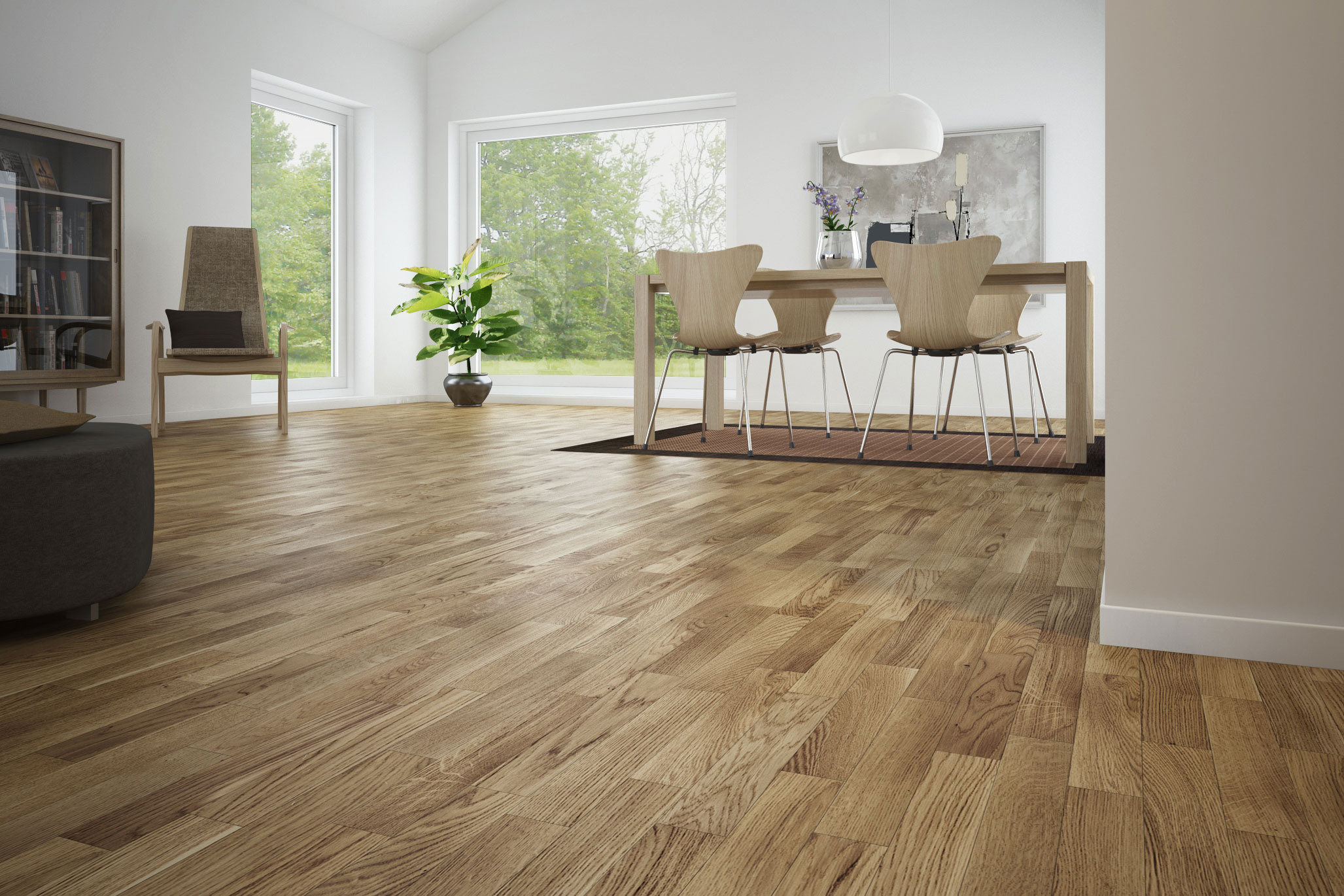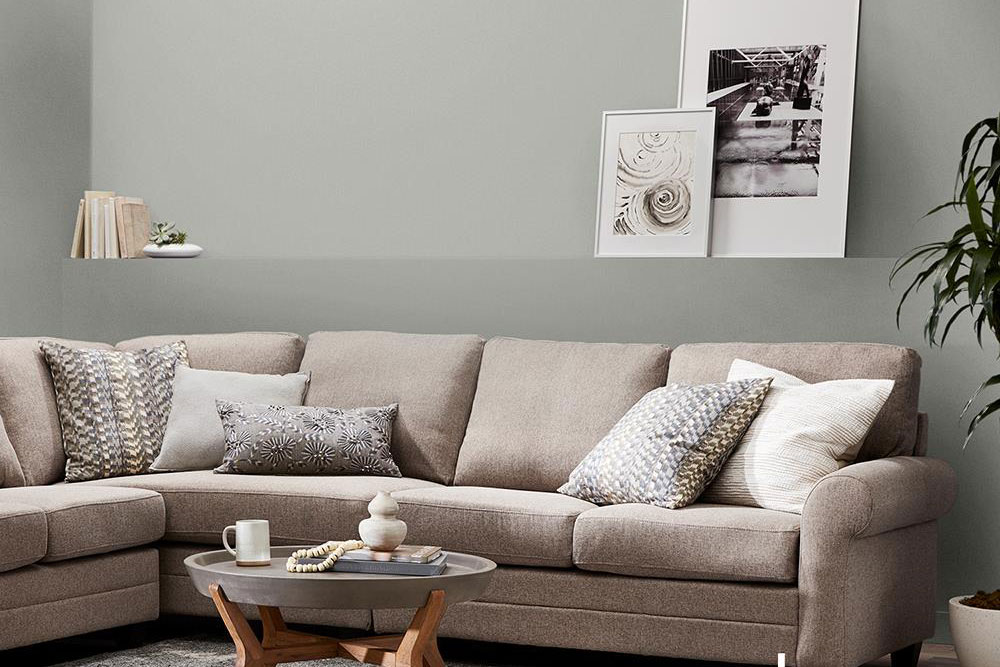Story at a glance:
- VOCs can be harmful to your health, and they can be found off-gassing throughout most homes.
- Concentrations of many VOCs are consistently higher indoors than outdoors.
- Opening the windows and installing the right air filters are great places to start.
Your carpet, your paint, even your clothes—you could be breathing in VOCs and not even know it. The American Lung Association says breathing VOCs can irritate the eyes, nose, and throat, cause difficulty breathing and nausea, and damage the central nervous system as well as other organs. Some VOCs can even cause cancer after a lifetime of exposure. But how to reduce VOCs in the home? And what are VOCs, exactly?
In this article we’ll provide answers to both questions and take a look at 10 of the most effective methods for reducing VOCs in the home.
What are VOCs?

The View Plus air quality monitor includes a built-in display and sensors for radon, particulate matter (PM), carbon dioxide (CO2), humidity, temp, airborne chemicals (VOCs), and air pressure. Photo courtesy of Airthings
The EPA defines VOCs, or volatile organic compounds, as compounds with a high vapor pressure and low water solubility that are emitted as gasses from certain solids and liquids. VOCs include a variety of chemicals—many of which are human-made—that typically come with short and/or long-term adverse health effects. Concentrations of many VOCs are consistently higher indoors (up to 10 times higher) than outdoors, and you might be surprised by just how common they are.
Common examples of household VOCs include:
- Formaldehyde
- Benzene
- Toluene
- Acetone
- Ethylene glycol
- Xylene
- Benzaldehyde
- Methylene chloride
- Acetaldehyde
- 1 & 3 Butadiene
- Tetrachloroethylene
Many household products contain VOCs—from paints, cleaners, and wood preservatives to many hobby supplies and even dry-cleaned clothing.
For decades VOCs were all too common in many building materials and furnishings, though more and more design teams are making conscious efforts toward greener designs.
If you’re worried about potentially high concentrations of VOCs in your home, there are many IAQ monitors out there on the market, like Airthings’ View Plus—an all-in-one indoor air quality monitor that uses sensors to measure VOCs, carbon dioxide, radon, air pressure, temperature, humidity, and particulate matter (PM).
10 Ways to Reduce VOCs in the Home
While the pervasive nature of VOCs can make reducing their concentration seem like a daunting task, there are actually a number of simple steps you can take to improve your indoor air quality. These methods generally fall into one of three categories: source control (considered the most effective), ventilation, or air cleaning.
Here are 10 tips for reducing VOCs in the home.
1. Open the Windows

Photo by Dietrich Floeter
Reducing VOCs starts simple. Anyone can open a window, and according to the experts, it really does help. A study published in Building and Environment that observed how open and closed windows impacted nighttime concentrations of indoor CO2, VOCs, and PM10 found that concentrations of VOCs were significantly lower when the windows were open. Turning fans on while the windows are open can help improve ventilation and reduce VOC levels even faster.
Make it easy on yourself and beautify your home at the same time by installing energy-efficient windows. Check out Western Window Systems, whose innovative door systems and windows include inspiring picture windows and easy to open multi-slide door systems.
Keep in mind, however, that just as opening windows can help remove VOCs from the home, it can also introduce pollutants as well. It is for this reason that opening your windows is not recommended if you live somewhere with chronically poor air quality—like a dense urban center or near a busy roadway—nor is it wise to open windows on days where Code Orange or Code Red air quality alerts have been issued. Doing so will worsen indoor air quality and put occupants at a greater risk for developing respiratory problems.
2. Install Carbon Air Filters
While it’s true that the most effective means of reducing VOCs in the home is to remove them at their source, it isn’t always possible or practical to do so—but that doesn’t mean you have to live with those VOCs, either. Using carbon air filters in your HVAC system, for example, can help trap existing VOCs and prevent them from circulating in your home.
The USGBC recognizes the importance of high-quality air filtration by awarding LEED points for HVAC systems using MERV 13 or higher filters, according to Michael Bruce, of Filtration Group—but even these high efficiency particulate air (HEPA) filters can’t remove VOCs from the air. That’s because HEPA filters are designed to trap pollutants that are 0.3 micrometers or larger, and most VOCs are about 1,000 times smaller than that threshold.
Carbon, or gas-phase filters, however, can trap VOCs. “For locations where nuisance odors need to be removed (like restaurants and hotels), gas phase filters use activated carbon to remove the volatile organic compounds that cause many unwanted smells,” Bruce wrote in a previous gb&d article. “Targeted gas phase filters can even be used to remove specific unwanted gasses like the formaldehydes in diesel exhaust with the addition of impregnated chemistry to the activated carbon.”
These filters use activated carbon to remove gaseous pollutants from the air via the process of adsorption, or the adhesion of atoms, molecules, or ions from a gas, liquid, or dissolved solid to a surface. In the case of gas-phase filters, VOCs stick to the outside of microscopic carbon particles in the filter’s adsorption bed. The CDC says pleated filters—which can be found in most hardware stores—are more efficient than non-pleated fiberglass or electrostatic filters. They advise that they be installed initially within the HVAC system by a professional.
3. Invest in an ActivePure Air Purifier

ActivePure air purification units use reactive oxygen molecules to break down VOCs and other pollutants. Photo courtesy of ActivePure
Activated carbon filters are great at removing VOCs in the short term, but can gradually become less effective over time if the indoor humidity is too high or if they become oversaturated with pollutants. This means frequent maintenance and replacement is required to keep them working at peak efficiency—and that isn’t always the most economical solution.
Fortunately there are certain air purifiers—like those produced by ActivePure—that are engineered to essentially neutralize or destroy VOCs as they pass through their in-unit air filter. Originally designed in collaboration with NASA to neutralize pathogens, ActivePure is capable of removing a host of other pollutants from the air as well, including VOCs, bacteria, fungi, mold, and pollen.
Once switched on the ActivePure unit fills a space with reactive oxygen molecules in a matter of seconds. These molecules then scrub the air and pull apart VOCs, bacteria, viruses, and mold spores without the need for chemicals or additional ventilation and using minimal energy.
4. Switch to Natural Cleaning Products
Chemical cleaning agents are another common source of VOCs. Replacing strong, synthetic cleaners with non-toxic, natural cleaners that are low in VOCs can help improve indoor air quality and prevent the headaches, dizziness, eye and throat irritation, and vision problems associated with exposure to VOCs.
5. Use Nontoxic Paint

Clare offers a wide variety of low-VOC paints in bright, long-lasting colors. Photo courtesy of Clare Paints
VOCs from interior paints continue to off-gas for months or even years after the fresh paint smell disappears. When you can, opt for products made from natural materials and ingredients like nontoxic paint. Nontoxic paints are those that contain VOCs in a concentration of less than 50 grams per liter.
Compared to traditional paint VOC levels are reduced in all varieties of nontoxic paints. The federal government has capped VOC levels to 250 grams per liter for flat finish paints and 380 grams per liter for glossy and other finishes. Low-VOC paints comply with California’s South Coast Air Quality Management District’s limit of 50 grams per liter for all finishes, according to Consumer Reports.
Brands like Clare, ECOS Paints, Valspar, and Farrow & Ball all offer bright and lasting colors that are safe for interior spaces. When choosing a nontoxic paint look for those with a Cradle-to-Cradle, GreenSeal, MPI Extreme Green, or GREENGUARD certification.
6. Toss Unused Paints & Similar Products
The EPA advises against storing opened containers of unused paints, solvents, caulk, and similar materials indoors, as these can often “leak” VOCs into the air once they are unsealed. If it is absolutely necessary to store open containers of these materials, we recommend storing them in a shed or some other non-attached structure.
Potentially hazardous products often have warnings aimed at reducing exposure of the user. For example, if a label says to use the product in a well-ventilated area, go outdoors or in areas equipped with an exhaust fan to use it. Otherwise, open up windows to provide the maximum amount of outdoor air possible.
7. Buy Furniture Secondhand or Choose Low-VOC

This Harrison credenza from Medley is protected with a natural matte beeswax finish that is odorless, no-VOC, and water- and heat-resistant. Photo courtesy of Medley
Many home furniture items—think drapes, carpets, upholstered furniture—utilize stain-repellents and/or flame-retardants that emit VOCs. Solid wood furnishings can also emit VOCs via their staining or finish material, whereas composite or pressed wood products often contain formaldehyde.
Buying furniture second-hand can drastically reduce the likelihood of future VOCs as most furniture items off-gas the bulk of their VOCs within the first few years of their lifetime. Sourcing used furniture is also an environmentally-conscious practice that supports a circular economy and reduces the amount of waste sent to landfills.
If there are any furniture items that you absolutely need to buy new, look for companies that make a concerted effort to reduce their products’ VOC levels. Medley, for example, is a California-based company that produces handcrafted furniture from eco-friendly materials. All of the wood used in their products—like the Harrison credenza pictured above—is FSC-certified, low-VOC CARB 2 compliant, and makes use of a zero-VOC finish.
8. Check Your Humidity Levels
High humidity levels in an interior space can negatively impact air quality as a result of excess moisture in the air. Eliminating humidity altogether isn’t ideal as some ambient moisture is needed to prevent nosebleeds, coughing, and dry skin, but too much moisture can exacerbate asthma, allergies, and other respiratory conditions, as well as lead to mold and mildew growth. When partnered with high temperatures, excessive humidity can also increase VOC off-gassing, which is why relative humidity levels should be kept between 40 and 60%, according to the EPA.
If you live in an exceptionally humid region or are dealing with moisture problems beyond your control, investing in a dehumidifier can help bring indoor humidity levels to that recommended level. Dehumidifiers work by drawing air in through a fan, passing said air over condenser coils to cool it down, contracting it, and then blowing warmer, dryer air back into the room.
9. Use Waterborne Finishes

Waterborne finishes are naturally low-VOC and help promote a healthy indoor environment. Photo courtesy of Bona
If your home has hardwood floors, the finish that protects it may very well be off-gassing VOCs into the air. Refinishing wood floors with a waterborne finish can help reduce VOC emissions while also minimizing harm done to the environment.
“When it comes to hardwood floor finish, a range of options are available, including oil-modified polyurethane, waxes, natural penetrating oils, and acid cured,” Dave Darche, national market manager of adhesives/A&D for Bona US, wrote in a previous gb&d article. “But the best and most sustainable choice is always a waterborne finish, which not only offers a highly durable and long-lasting finish but is low in VOCs and overall less impactful on the environment and better for indoor air quality.”
Bona is an international sustainability-driven company based in Sweden that supplies a range of eco-conscious products for installing, renovating, maintaining, and restoring premium floors.
10. Consider Brick

This private residence was built using brick—an inherently non-emitting material—from Glen-Gery. Photo by Mike Sinclair
For new construction or even renovation, you might consider avoiding VOCs by using brick masonry, which is inherently non-VOC emitting. According to the Brick Industry Association, since brick masonry can be used on the interior of a building, serving as structure and/or a finish without the need for paints or coatings, the VOCs avoided result in improved indoor air quality.
“Brick masonry is an inherently non-emitting material and meets VOC criteria without any special testing, unlike other finish materials. So homeowners can literally breathe easier knowing the air they breathe is healthier,” Tim Leese, director of marketing for Glen-Gery, a premier brick and stone manufacturer in the US, wrote in a previous article for gb&d.
Laura Rote contributed to this article.




